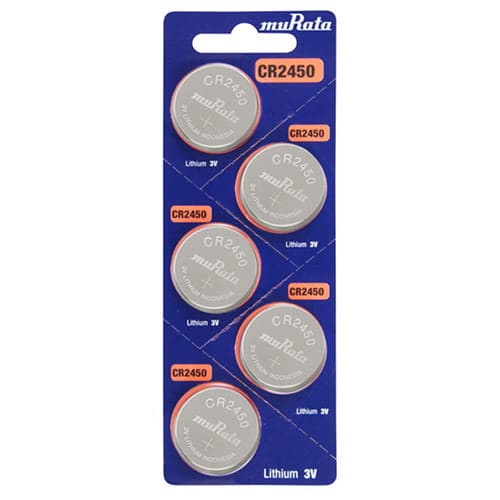

#CR2450 3 VOLT BATTERY MANUAL#
Thus, never forget to check the gadget’s manual before inserting 3.2V cells into their systems. Their output voltage is only slightly larger than 3-volt batteries but still delivers great risks for sensitive devices. 3.2V: These cells often boast a chemistry formula of LiFePO4 (or Lithium Iron Phosphates).They have similar output voltages that never surpass 3 volts, posing no danger to any sensitive electronics. 3.0V: These cells can serve as a direct substitute for CR2450 models.Let’s delve into the performance of each. Their nominal voltages vary across different chemistry formulas, fluttering among 3.7, 3.6, 3.2, and 3.0 volts. LiR2450 refers to 2450 rechargeable batteries. Make sure to inspect their shell life carefully before making your purchase. One note, however: some brands label these two models interchangeably to imply that they can substitute each other. Overall, despite their inferiority to CR2450 in capacity, discharge current, and accessibility (BR2450 is quite a challenge to find in stores these days), BR2450 could still serve as a direct replacement.

For customers who value durability, it seems BR2450 is a terrific choice! Its shell life can extend to at least ten years – thrice the lifespan of CR2450 (only three years). However, that does not signal a complete defeat for BR2450. Even old models of CR2450 could still reach 540 to 580 mAh, much better than BR2450. Furthermore, their capacity – though impressive (500 to 550 mAh) – still has miles to catch up with CR2450 variants with their 600 to 620 mAh volume. To be more specific, for starters, they fail to offer heightened discharge currents for remote controls, non-key entry systems, and other gadgets. Still, these benefits are a bit lagging compared to CR2450 lithium batteries. These lithium carbon-monofluoride batteries set themselves apart by their consistent output voltage and low discharge rate. Still, these batteries do exist – in the form of the BR2450 and other “BR” cells! Given technological difficulties, it is quite rare to spot a 2450 battery with positive carbon-monofluoride electrodes. Though they might not be as great, you can always turn to these options in case CR2450 is not an affordable purchase for you. Now, let’s see which CR2450 battery replacement can fare against the CR2450 itself in terms of performance and quality. What Is The Possible CR2450 Battery Equivalent?īR2450, LiR2450, CR2430, CR2477, and CR2032 are 5 candidates for CR2450 replacements. Suppose your kid ingests a battery – whether CR2450 or any similar model immediately contact a provincial emergency center and follow their instructions.

The main issue lies in its electrolysis, which might pave the way for burns and internal injuries.Įven though some brands categorize their C-R2450 batteries in “child-safe” packages, you should keep them away from your pets and kids just in case. No, that is not due to any toxic elements after all, this coin cell battery has earned favorable feedback thanks to its absence of cadmium, lead, mercury, and heavy metals. Just like most lithium coin batteries, CR2450 might be harmful upon swallowing. These bars are either inserted before or after battery assembly via a ‘cold’ soldering process (such as ultrasonic soldering). Hence, using soldering tabs fused by your manufacturers is still advisable. Nonetheless, if not properly executed, such moves might overheat your cell, leading to damage and shortened lifespan. We cannot deny that, in theory, you may solder the tabs directly onto BR or CR batteries without any filters. Several CR2450-operated devices have soldering tabs to fuse these batteries to the motherboards. People use this coin cell battery for watches, calculators, electronic devices, or healthcare devices. Still, other labels are sometimes adopted CR2450EL, CR2450EL, CR2450, CR2450N, ECR2450, DL2450, and 5029LC are cases in point. Their weights differ across models, running from 5.7 to 6.4 grams (around 0.2 to 0.222 ounces).Īside from that, these cells feature negative electrodes composed of lithium, accompanied by positive electrodes stemming from manganese dioxide, which explains the starter “CR” in their labels.Īs you might have guessed, “CR2450” serves as a standard title for all lithium 2450 batteries with positive manganese-dioxide electrodes. The CR2450 batteries boast 5.0 mm (0,197 inches) in height and 24.5 mm (0,964 inches) in diameter.


 0 kommentar(er)
0 kommentar(er)
